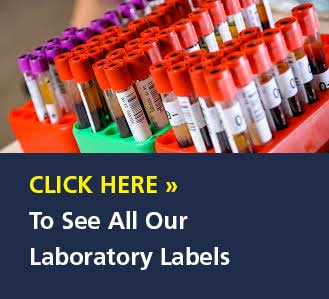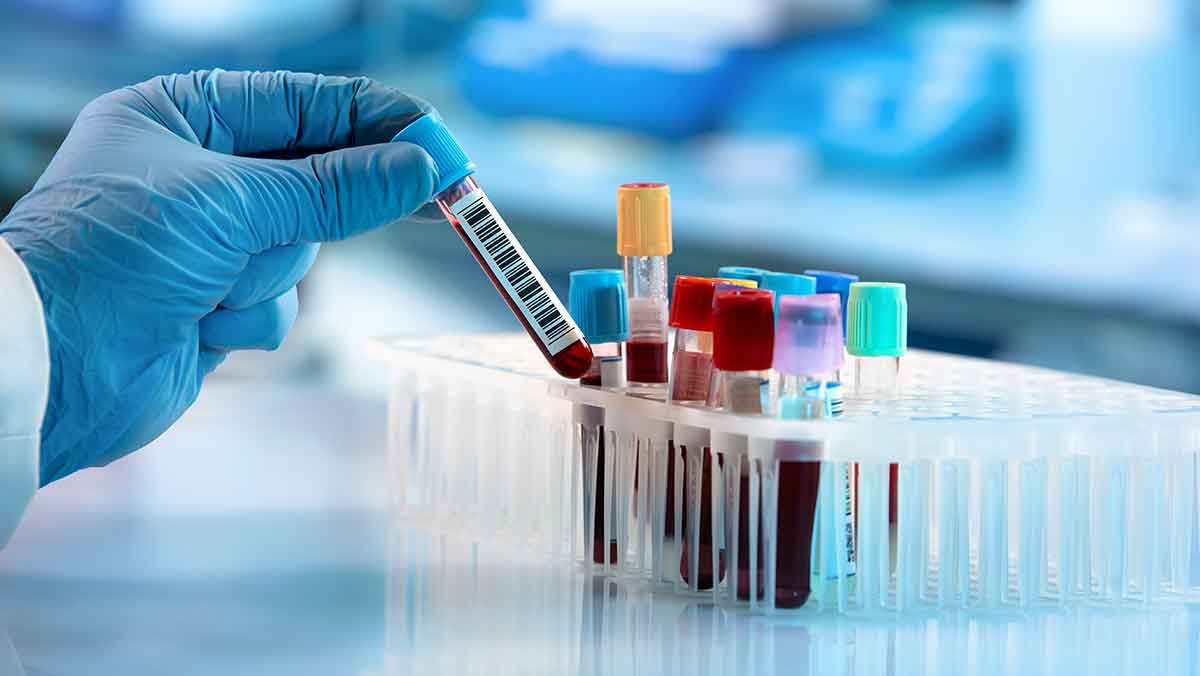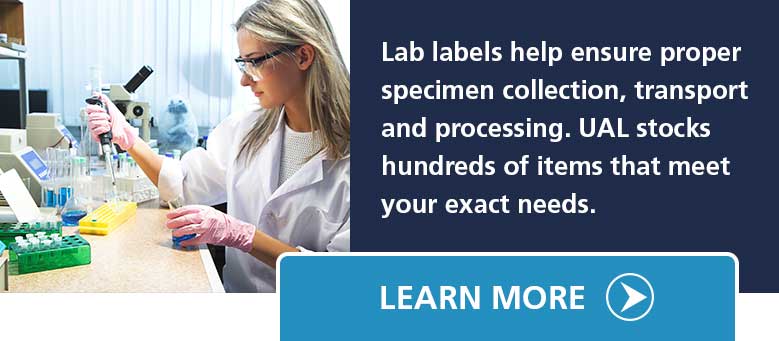38,356,164¹. That’s how many lab tests are performed on average in the U.S. each day. From a common everyday complete blood count test to evaluate a patient's overall health and detect a wide range of disorders, to the rare screening for the type of bacteria that causes anthrax, laboratory tests have an immeasurable impact on diagnostic and treatment decisions. In fact, 70% of today’s medical decisions depend on laboratory test results. But when a step in the testing process gets disrupted, it can cause problems that range from a delayed diagnosis and a need to redraw a specimen, to the serious consequences of patient misidentification. Labeling specimens properly can prevent disruptions in the workflow. Use these 10 essential lab labels to help ensure proper specimen collection, transport and processing, meet Joint Commission labeling requirements and protect patients and staff.
The Importance Of Labeling In The Laboratory
Laboratories perform tests that guide patient care and allow healthcare providers to confirm a diagnosis, build a treatment plan and manage and monitor a patient's condition. A laboratory label provides positive patient identification and other essential details that make it all possible. What happens without a lab label? Specimens get rejected and patient safety is compromised all while increasing the workload of the care team.
Most healthcare organizations require a label on the specimen container. Without one, the specimen gets rejected.
What Should Lab Labels Include?
To protect patients from adverse errors made due to improperly labeled specimens, a lab label must contain the following legible information:
- Patient name
- Patient medical record number, with check digit
- Patient location
- Collection date and time
- Specimen type and/or source T
- est required (note any special handling required)
- Ordering physician
A specimen is incompletely labeled if any of the required information is missing.
In addition, although specimen containers are typically sent in a transport bag, the actual specimen must be labeled. It is not acceptable to label only the bag or other container used to transport the specimen.
What If Specimens Are Mislabeled Or Improperly Labeled?
Typically, specimens that are received unlabeled, double-labeled, or contain a requisition with a name and/or medical record number different from what is affixed to the specimen, will not be tested.
Further, when improper labeling causes the specimen to be rejected, it may require redrawing the specimen.
Laboratory Safety Precautions
In addition to the importance of labels in specimen collection, transporting and processing, and the role they play in ensuring patient safety, labels also communicate precautions to the laboratory staff, warning against the safety challenges chemicals can create.
Not surprisingly, chemicals create safety challenges in medical laboratories. The Occupational Safety and Health Administration requires labeling of containers of chemicals in the lab, as well as containers of chemicals being shipped to other workplaces.
10 Essential Laboratory Labels
These 10 laboratory labels help to facilitate laboratory workflows and are essential for both labeling specimens and communicating safety precautions to staff within the lab.
1) Biohazard Labels
Used in conjunction with OSHA exposure control program, Biohazard labels help to eliminate or minimize occupational exposure to bloodborne pathogens by identifying equipment, containers, rooms, materials and more which potentially or actually contain hazardous elements.
2) Consecutive Number Labels
In addition to patient samples and specimens, consecutive number labels are used to track a wide range of laboratory assets. Plus, the numbering allows the specimen to be delivered to the clinical staff and patient while maintaining the patient’s anonymity during the analysis process.
3) Cryogenic Laboratory Labels
Cryogenics is used in hospital laboratories to freeze biological samples such as stem cells, plasma, cells and strains. Cryogenic laboratory labels are engineered to withstand cryogenic refrigerators and liquid nitrogen over an extended period of time and remain intact during those extremely cold conditions.
4) Laboratory Colored Tape
Laboratory colored tape simplifies the color-coding of equipment, instruments, and charts. Plus, when specimens require special handling, using colored tape on lab benches improves workflow by denoting new, in process and complete.
 5) Laboratory Information Systems (LIS) Labels
5) Laboratory Information Systems (LIS) Labels
LIS labels simplify the process of differentiating a lab's samples, reagents, or plates. LIS labels with a unique barcode are the most effective way to track and keep those items separate.
6) Laboratory Specimen Labels
Laboratory specimens go through three distinct steps including collection, transportation and processing. Specimen labels ensure positive patient identification through each step.
7) Microscope Slide Labels
Microscope slide labels are used on all types of microscope slides including glass, fiberglass and plastic, including both wet- and dry-mounted slides. They are typically labeled on the frosted end and include the accession number, slide designation and patient name.
8) OSHA and GHS Safety Labels
OSHA AND GHS labels communicate chemical hazards, providing an instant reminder to employees in the lab of the chemical hazards they may face. In addition, they simplify the labeling of secondary containers with information required by OSHA.
9) Quality Control Labels
In addition to testing and specimen analysis, laboratories also manage reagents, instruments and more. Quality control labels help to track and manage those items effectively.
10) Warning Storage Labels
Warning storage labels mark receptacles that contain common reagents and hazardous materials. They help guard against accidents and illnesses by communicating essential safety information.
United Ad Label
For over 60 years, United Ad Label has produced stock and custom lab labels that improve the specimen workflow and patient and staff safety. Our catalog contains hundreds of products used throughout the hospital laboratory workflow that are in stock and available for immediate shipment. Plus, when your needs call for a custom laboratory label, our online custom label designer app allows you to easily design, price, proof and order a product that meets your specific needs. Contact us to learn more.

